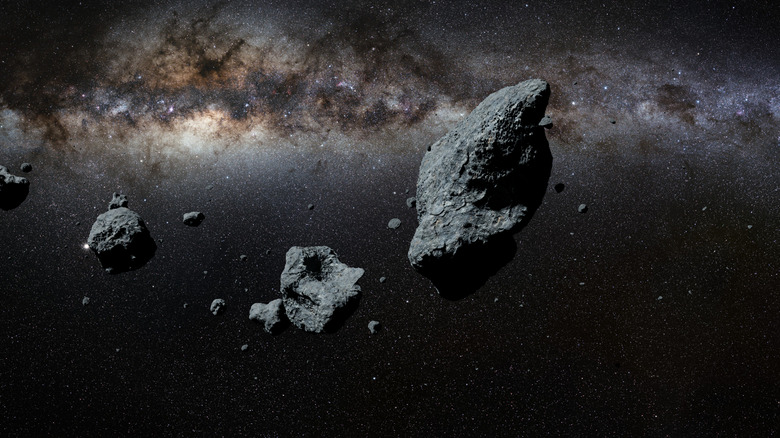An Asteroid Big Enough To Destroy A City Just Missed Earth
An asteroid big enough to be a "city-killer" almost hit Earth, and scientists had barely more than a moment's notice about the potential collision.
Sure, the asteroid never got more than 45,360 miles away from Earth, and scientists did have hours of notice. But that's all relative when we're talking about space, and some researchers are calling the asteroid flyby a near-miss that should be a wakeup call.
When Did This Go Down?
When Did This Go Down?
The flyby happened July 25, when the asteroid now known as Asteroid 2019 OK swept past Earth, getting less than one-fifth of the distance to the moon away from our planet. The asteroid was somewhere between 190 to 425 feet. That doesn't seem that huge, if you think of it as just a giant rock hanging out somewhere in space. And it's not big, by historic asteroid standards – this wouldn't be as big as the one that killed off dinosaurs, for instance.
But when propelled toward Earth at about 54,000 mph (an astonishing 15 miles per single second), the asteroid could have the potential to do some serious damage, particularly if it hit an urban area. At that size and speed, the impact could have been similar to a bomb going off. Along with crushing infrastructure, shock waves could follow and lead to even greater devastation.
How Did We Not Know This Was So Close?
How Did We Not Know This Was So Close?
Teams of astronomers from Brazil and the U.S. detected it a few days in advance, although teams of researchers from other countries didn't know about it until just hours beforehand.
That's one of the reasons that some researchers told the Washington Post that this should be a wakeup call. Many scientists who study the skies believe there needs to be much more cooperation between international teams of researchers. After all, Earth is just one small part of our solar system, and an asteroid isn't going to choose to collide with only Brazil or the U.S.
More teams working together could mean better sharing of information and resources, particularly in cases like this one, where the asteroid was hard to spot. It was traveling a little faster than most asteroids, and it had an elliptical orbit that put it out of view of telescopes for larger periods of time than some asteroids.
Plus, it was smaller than most of the asteroids that NASA has its eyes on, the ones that really would be big enough to wipe out more than a single city. Most of those aren't on paths that could hit Earth (though NASA is working on a plan for one that could collide with our planet in September of 2135), but astronomers still use giant telescopes, radar and lots of advanced math to keep watch on those big guys. The planet's safe from asteroids – for now.
Cite This Article
MLA
Dragani, Rachelle. "An Asteroid Big Enough To Destroy A City Just Missed Earth" sciencing.com, https://www.sciencing.com/an-asteroid-big-enough-to-destroy-a-city-just-missed-earth-13720459/. 1 August 2019.
APA
Dragani, Rachelle. (2019, August 1). An Asteroid Big Enough To Destroy A City Just Missed Earth. sciencing.com. Retrieved from https://www.sciencing.com/an-asteroid-big-enough-to-destroy-a-city-just-missed-earth-13720459/
Chicago
Dragani, Rachelle. An Asteroid Big Enough To Destroy A City Just Missed Earth last modified March 24, 2022. https://www.sciencing.com/an-asteroid-big-enough-to-destroy-a-city-just-missed-earth-13720459/
